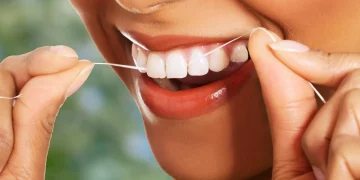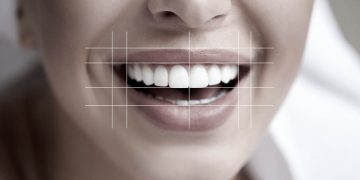Gum disease, or periodontal disease, is a common but serious oral health condition that affects the gums and the structures that support the teeth. If left untreated, it can lead to tooth loss, gum recession, and other complications. However, in its early stages, gum disease is reversible with the right care and treatment. Understanding the early symptoms, how to detect gum disease, and the appropriate treatment options are essential for preventing its progression and maintaining good oral health.
What Is Gum Disease?
Gum disease is an infection of the gums caused by the buildup of plaque and tartar, which leads to inflammation and infection. There are two main stages of gum disease:
- Gingivitis: This is the earliest stage of gum disease and involves inflammation of the gums, but it does not cause permanent damage to the teeth or bones. Gingivitis is typically reversible with good oral hygiene.
- Periodontitis: If gingivitis is left untreated, it can develop into periodontitis, a more severe form of gum disease. Periodontitis can cause irreversible damage to the gums, bones, and connective tissues that support the teeth. It can lead to tooth mobility and tooth loss.
Early Symptoms of Gum Disease
In the early stages of gum disease, symptoms may not always be obvious, and many people may not even realize they have it. However, it is important to be aware of the following early warning signs:
1. Red, Swollen, or Bleeding Gums
One of the first signs of gum disease is redness and swelling in the gums. Healthy gums should be firm and pale pink, but in the early stages of gum disease, the gums become inflamed and may appear darker red. Bleeding gums when brushing or flossing is another early symptom. If your gums bleed consistently, it could be an indication of gingivitis.
2. Bad Breath (Halitosis)
Persistent bad breath, or halitosis, is another common sign of gum disease. The bacteria in the plaque and tartar buildup on the teeth produce foul-smelling substances that can lead to bad breath. If brushing and mouthwash do not seem to resolve the bad breath, it could be a sign of a developing gum infection.
3. Gum Recession
As gum disease progresses, the gums may start to recede or pull away from the teeth. This exposes more of the tooth’s surface and may even reveal the tooth roots. Gum recession is often accompanied by increased tooth sensitivity, particularly when eating or drinking hot, cold, or acidic foods.
4. Tender or Painful Gums
Tender, painful, or sore gums can be a sign of inflammation caused by gum disease. If your gums hurt when brushing or chewing, this may indicate that bacteria are causing an infection beneath the surface of the gums.
5. Loose or Shifting Teeth
In the more advanced stages of gum disease, the bone that supports the teeth can begin to break down due to chronic inflammation. This leads to the loosening or shifting of teeth. You may notice that your teeth feel loose or that your bite has changed. This is a sign of periodontitis and requires prompt dental attention.
6. Pus Between Teeth and Gums
When gum disease reaches a more severe stage, the infection can cause pus to form between the teeth and gums. This is a clear sign of an active infection and needs to be addressed immediately by a dentist.
7. A Change in Bite or Fit of Dentures
People who wear dentures may notice that their dentures no longer fit properly, or they may feel uncomfortable when biting. This can be a result of gum recession and changes in the alignment of teeth, which occur due to the bone loss associated with advanced gum disease.
How to Detect Gum Disease Early
Gum disease often develops slowly, and the early symptoms can sometimes be subtle. Regular dental check-ups are crucial for identifying gum disease early and preventing it from advancing. Here are some steps for detecting gum disease early:
1. Regular Dental Check-ups
The most effective way to detect gum disease early is by visiting your dentist regularly. During these visits, your dentist will examine your gums for signs of inflammation, bleeding, or recession. They may also measure the depth of the pockets between your teeth and gums using a small probe. Deepening pockets between the gums and teeth are an indication of periodontitis and can help your dentist detect gum disease in its early stages.
2. Professional Cleanings
Even if you maintain good oral hygiene, plaque and tartar can build up in areas that are difficult to clean. Professional cleanings performed by a dentist or hygienist remove plaque and tartar from below the gumline, helping to prevent the development of gum disease. Regular cleanings can also help your dentist spot early signs of gum disease before they become more serious.
3. Be Proactive About Symptoms
You should be proactive in noticing the early signs of gum disease, such as bleeding gums, bad breath, and gum sensitivity. If you notice any of these symptoms, it’s important to schedule a dental appointment as soon as possible. Catching gum disease in its early stages makes treatment easier and more effective.

How to Treat Gum Disease
Treatment for gum disease varies depending on the severity of the condition. Early-stage gingivitis can usually be reversed with better oral hygiene, while more advanced periodontitis may require professional treatments. Here are some common treatments for gum disease:
1. Scaling and Root Planing (Deep Cleaning)
For early-stage gum disease (gingivitis), the first step is often a professional cleaning, which may involve scaling and root planing. This procedure removes plaque and tartar buildup from below the gumline and smooths out the surface of the tooth roots to help the gums reattach. Scaling and root planing can prevent gingivitis from progressing into more severe forms of gum disease.
2. Antibiotics
If there is an infection present, your dentist may prescribe antibiotics to help control the bacterial infection in your gums. Antibiotics may be applied directly to the affected areas or taken orally. Your dentist may also recommend antimicrobial mouthwashes to reduce bacteria and inflammation.
3. Gum Surgery
In more advanced cases of periodontitis, surgery may be required to repair the damage caused by gum disease. There are several types of gum surgeries, including flap surgery and soft tissue grafts, which are used to reduce pocket depth, remove infected tissue, and promote healing. In severe cases, bone grafts may be necessary to restore lost bone tissue.
4. Laser Treatment
Laser treatment is a modern and minimally invasive option for treating gum disease. Lasers are used to remove infected tissue and promote healing. This method can reduce gum bleeding, swelling, and discomfort, making it a popular choice for many patients.
How to Prevent Gum Disease
The best way to treat gum disease is to prevent it in the first place. Here are some tips for maintaining healthy gums:
- Brush and Floss Regularly: Brush your teeth at least twice a day with fluoride toothpaste and floss once a day to remove plaque and food particles between your teeth.
- Use Mouthwash: An antimicrobial mouthwash can help reduce bacteria in the mouth and prevent gum disease.
- Eat a Healthy Diet: A diet rich in fruits, vegetables, and whole grains provides the nutrients needed to keep your gums healthy. Avoid sugary foods and drinks, as they contribute to plaque buildup.
- Quit Smoking: Smoking is a major risk factor for gum disease. If you smoke, quitting can greatly reduce your risk of developing gum disease.
- Regular Dental Visits: See your dentist for regular check-ups and cleanings. Early detection of gum disease can prevent it from becoming a serious problem.
Conclusion
Gum disease is a serious condition that can lead to tooth loss and other complications if left untreated. However, it is largely preventable, and early-stage gum disease (gingivitis) is reversible with good oral hygiene and professional treatment. By being aware of the early symptoms, scheduling regular dental check-ups, and taking steps to maintain healthy gums, you can significantly reduce your risk of gum disease and ensure a healthy smile for years to come. If you notice any signs of gum disease, don’t wait—visit your dentist promptly to prevent further damage.













































Discussion about this post